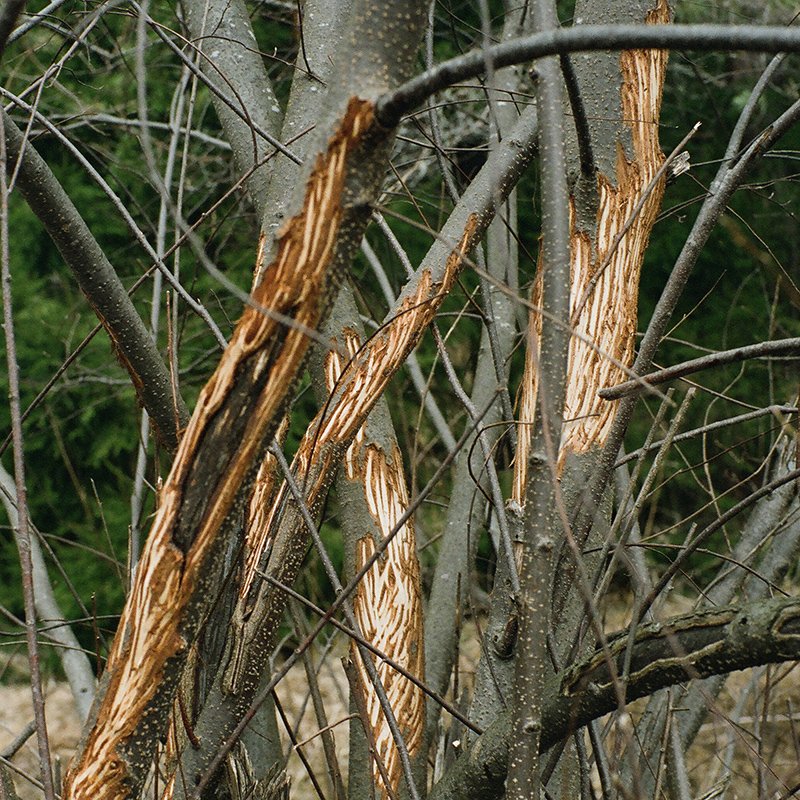
Dmitry Ermakov
Healing Place
Jun 08, 2020
Dmitry is a Russian photographer working around documentary photography with a poetic approach. Interested in portraying the essence of things, Dmitry prefers topics that are related to man and nature where he can reveal the not-obvious, the 'hidden'. In his series 'Healing Place', Dmitry travels to the Udmurtian Republic in Russia, in order to capture the pagan traditions and rituals of the community. Surrounded by a halo of mystery, Dmitry's images are calm and enticing, and at the same time powerful and defiant.
First of all thank you very much for your contribution to our project. Can you please introduce yourself for us?
Thanks a lot for your interest. My name is Dmitry Ermakov, I was born and live in Moscow, Russia. I spent some years in St. Petersburg, where I was really inspired by the city and the northern nature around it. I graduated over there from the Fotografika school of art and documentary photography. But then, for creative and commercial reasons, I came back to Moscow. Currently, I work as a freelance photo and writing journalist, and sometimes as a photo editor.
How did you start in photography?
I got my first camera when I was 12 (or 14?), it was a lomographic Smena 8M, a model that was very famous in the USSR and then Russia. This was at the beginning of the 1990s, then the hard times came for all the country and I gave up photography. I made my ‘second try’ when I was 27. For the next five years, photography remained an easy romance for me, and only by 2010 I realized that this was a 'real love'. Then I became a professional photo journalist. But I always knew that the mainstream, in its broadest sense, was not my thing. Nowadays, when everybody is a photographer, I can hardly explain the need to shoot something that is usual and visible to all. With some proper training, anyone could do it. Therefore I’m interested in the other things: the ‘fifth dimension’, the human passions, the beauty of the hidden. I work with some complex topics, often preferring regional context over the usual big city life. But inside I’m still a big urbanist and a post-punk. So I think that one of my new projects will concern the post-industrial future, and that’s especially important after the COVID-19 economic fall.
What is 'Healing Place' about?
The Udmurtian Republic in Russia is one of the last places in Europe where people still live in a pagan way. Many Udmurts still go to folk healers, often preferring their methods to academic medicine. Although many residents officially call themselves Christians, the root religion is still there. The neighbors still visit the Udmurts sorcerers and believe that they practice black magic. To the uninitiated, it appears as a kind of voodoo. But if these people have been living hand in hand with nature for many centuries, perhaps they know its secrets?
My interest in the Finno-Ugric cultures was formed a long time ago, though not in my childhood. In Russia, they don’t say much about the places where people keep root traditions uninterrupted. In the beginning of my documentary photo career, I was longing to visit such places, and since 2013 I have made dozens of trips around the country. Udmurtia, for some reason, hooked me the most. Local people are not open, but if they do, then their friendship is forever. I also fell in love with the nature of Udmurtia, there is something special in the air that turns it blue by night and smells like no other thing.
For some reason, photographers from around the world bypass it, preferring the Finno-Ugric republic or the Mari El. But she (in Russia, the land, the earth is female) is no less interesting. I think her time will come. Perhaps someone can think this area is a strange choice in terms of beauty, dim and sometimes gloomy, but I see hundreds of interesting visual and other nuances here.
What inspires your work in general?
Man and nature. But humans are part of nature, so I try to catch the light and essence when shooting, the rest is just a material form. I work with light, color and mood. Some people say that my photos are too dark, but that’s because we live in Russia. I’m not a gloomy person and I love life, but I realize it’s not always a river of joy. That’s not bad and not good, that’s a fact.
Who are your favourite photographers / artists?
I think that we live in very beautiful and interesting times, but there is an overload of visual information. I follow hundreds of modern photographers on Instagram, some are absolutely fantastic, some are interesting but awfully similar. Unfortunately I cannot remember all the names. In any case, I love the works of Bryan Schutmaat, Alec Soth and Katrin Koenning. Speaking of Russian photography, I’m inspired by Yanina Boldyreva from Novosibirsk, probably because she does just what I like: combines documentary with visual poetry. And recently I've been touched by the portraits of a very young girl from Udmurtia, Genrietta Soboleva. She is almost unknown outside her local area, but she is doing very powerful and fresh works. Nowadays, I prefer watching fine art and modern art over photography. I’m inspired by the works of Soviet painter Konstatin Istomin. They are full of meaning and deep color, they show the author’s personal style and almost shine into the frailty of life but not tragedy.
What is your favourite movie?
I’m not sure if they are my all-time favourites, but now I’m in love with the movies by Sofia Coppola, all of them.
What is your favourite photo book?
‘Grays the Mountain Sends’ by Bryan Schutmaat, ‘This Is What Hatred Did’ and ‘Afronauts’ by Cristina de Middel.
Thank you very much for your time and contribution to analog magazine.
Thank you!
All images © Dmitry Ermakov
















